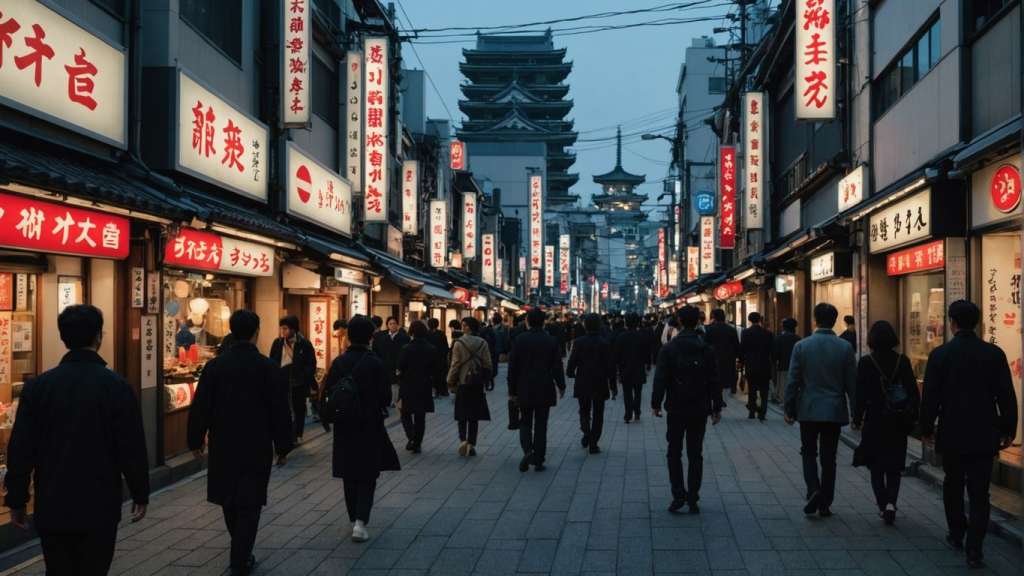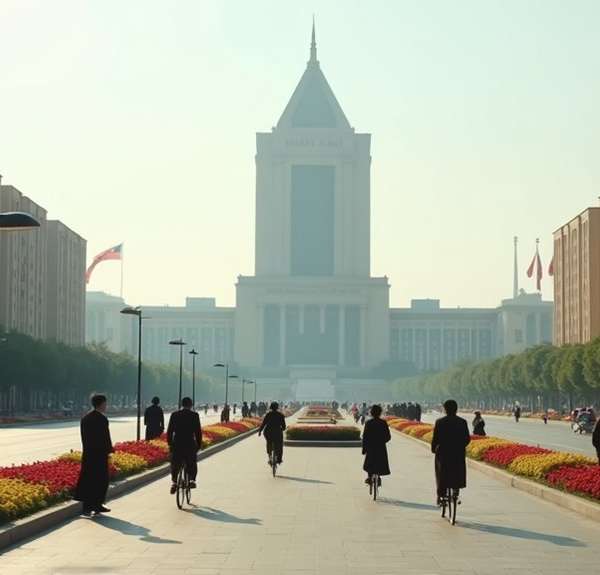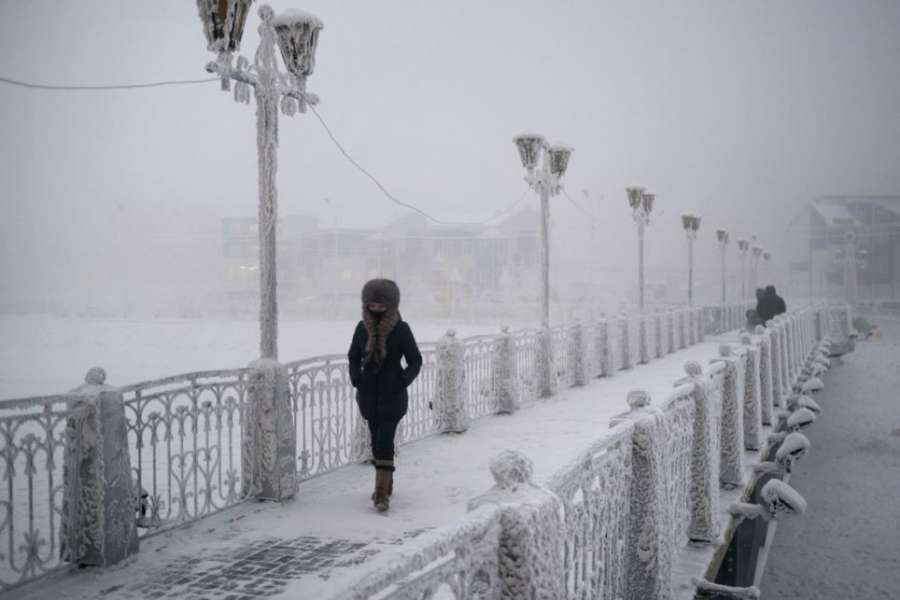Traveling to Tokyo can be exciting but also a bit overwhelming, especially if you don’t speak Japanese. However, you don’t need to be fluent to get by. Just knowing a few key phrases can make your trip smoother and more enjoyable. Here are 15 essential Japanese terms that will help you navigate Tokyo with ease.
15 essential Japanese phrases to help you navigate Tokyo with ease. Perfect for travelers!
- Learning basic Japanese phrases can greatly enhance your travel experience in Tokyo.
- Most signs and menus in Tokyo have English translations, but knowing some Japanese is still helpful.
- Japanese people are generally very helpful, even if they don’t speak English.
- Using polite phrases like ‘please’ and ‘thank you’ in Japanese will be appreciated.
- Familiarize yourself with phrases for common situations like ordering food, asking for directions, and shopping.
Konnichiwa
Konnichiwa (こんにちは) is the standard way to say “hello” or “good afternoon” in Japanese. It’s a versatile greeting that you can use throughout the day, especially from late morning until the evening.
When to Use Konnichiwa
- Daytime Greeting: Use “konnichiwa” to greet someone during the day, typically from late morning to early evening.
- Formal and Informal: Suitable for both formal and informal settings, making it a safe choice when meeting new people or interacting with acquaintances.
Pronunciation Tips
- Break it Down: Pronounce it as “KOHN-nee-chee-wah.”
- Practice Makes Perfect: Repeating the word several times can help you get comfortable with its pronunciation.
Cultural Context
In Japan, greetings are an important part of social etiquette. Using “konnichiwa” correctly can help you make a good impression and show respect for Japanese customs.
Remember, a simple “konnichiwa” can go a long way in making connections and showing respect in Japan.
Ohayou Gozaimasu
“Ohayou Gozaimasu” means “Good Morning” in Japanese. It’s a polite way to greet someone in the morning, typically used until around 10 AM.
- Ohayou: Informal, used among friends and family.
- Ohayou Gozaimasu: Formal, used in professional settings or with people you don’t know well.
Starting your day with a polite greeting can set a positive tone for your interactions. Don’t hesitate to use “Ohayou Gozaimasu” to show respect and friendliness.
Konbanwa
“Konbanwa” (こんばんは) is the Japanese phrase for “Good evening.” It’s used to greet someone in the evening, typically from sunset onwards. This greeting is the evening counterpart to “Konnichiwa” (Good afternoon).
When you’re out and about in Tokyo during the evening, using “Konbanwa” will help you blend in with the locals and show respect for their customs. It’s a simple yet effective way to make a good impression.
Sayounara

“Sayounara” (さようなら) is the Japanese word for “goodbye.” It’s a formal way to bid farewell and is often used when you don’t expect to see the person for a while. This term is more than just a casual goodbye; it carries a sense of finality.
In everyday situations, you might hear other, less formal ways to say goodbye, such as “ja ne” or “mata ne,” which are more like “see you later.” But when you want to be polite or formal, “sayounara” is the go-to phrase.
- **Usage Tips: **
- Use “sayounara” when parting ways for a long time.
- For casual goodbyes, opt for “ja ne” or “mata ne.”
Remember, using “sayounara” in the right context shows respect and understanding of Japanese culture.
Onegaishimasu
Onegaishimasu is a versatile and polite way to say “please” in Japanese. It’s often used in formal situations and can be applied in various contexts.
- When ordering food or drinks, you can say:
- “Mizu o onegaishimasu” (水をお願いします) – I would like water, please.
- “Kōhī o onegaishimasu” (コーヒーをお願いします) – I would like coffee, please.
- When asking for a favor or help, you might say:
- “Tetsudatte onegaishimasu” (手伝ってお願いします) – Please help me.
- “Mou ichido onegaishimasu” (もう一度お願いします) – Could you repeat that, please?
Onegaishimasu is more formal than “kudasai” (ください), which is used in more casual settings. For example, you might use “kudasai” when speaking with friends or peers, but “onegaishimasu” when speaking with a teacher, elder, or in a business setting.
Using “onegaishimasu” shows respect and politeness, making it a valuable phrase to know when navigating social interactions in Japan.
Arigatou Gozaimasu
When you want to say thank you in Japanese, you use Arigatou Gozaimasu (ありがとうございます). This phrase is very important in Japan, where politeness is a big part of the culture. You will probably use it a lot!
Casual vs. Formal
- Arigatou (ありがとう): This is a casual way to say thank you. You can use it with friends and family.
- Arigatou Gozaimasu (ありがとうございます): This is the formal way to say thank you. Use it in more serious situations, like when talking to a teacher, boss, or someone you don’t know well.
Extra Polite
If you want to be even more polite, you can say Domo Arigatou Gozaimasu (どうもありがとうございます), which means “Thank you very much.” This is useful when someone has done something really nice for you.
In Japan, showing gratitude is very important. Using the right form of “thank you” can show respect and make a good impression.
Dou Itashimashite
“Dou Itashimashite” means “You’re welcome” in Japanese. It’s a polite response when someone thanks you.
When to Use It
- After someone says “Arigatou Gozaimasu” (Thank you very much).
- In formal settings, like business meetings or when speaking to elders.
Pronunciation
- Dou Itashimashite: doh-ee-tah-shee-mah-she-teh
Cultural Note
In Japan, showing gratitude and acknowledging it politely is very important. Using “Dou Itashimashite” correctly can leave a positive impression.
Sumimasen

Sumimasen is a versatile Japanese term that you’ll find incredibly useful in Tokyo. It can mean “excuse me,” “I’m sorry,” or even “thank you” in certain contexts. This phrase is essential for getting someone’s attention politely, apologizing for a minor inconvenience, or expressing gratitude for a small favor.
When to Use Sumimasen
- Getting Attention: Use sumimasen to politely get someone’s attention, like when you need to ask for directions or get a waiter’s attention in a restaurant.
- Apologizing: It’s also used to apologize for minor inconveniences, such as bumping into someone accidentally.
- Expressing Gratitude: In some cases, sumimasen can be used to thank someone for a small favor, like holding the door open for you.
Examples
- In a Restaurant: If you need to call the waiter, you can say, “Sumimasen!” to get their attention.
- On the Street: If you accidentally bump into someone, a quick “Sumimasen” will suffice as an apology.
- Asking for Help: When you need assistance, starting with “Sumimasen” makes your request sound more polite.
Sumimasen is one of those words that can make your interactions smoother and more respectful. It’s a small word with a big impact on how you’re perceived by others.
Hai
In Japanese, “hai” (はい) means “yes.” It’s a simple yet powerful word that you’ll find yourself using often in Tokyo. Whether you’re agreeing with someone, acknowledging that you understand, or simply responding to a question, “hai” is your go-to word.
When to Use “Hai”
- Agreeing: If someone asks if you want something or if you understand, you can simply say “hai.”
- Acknowledging: When someone gives you instructions or information, saying “hai” shows that you are paying attention.
- Confirming: Use “hai” to confirm reservations, orders, or any other arrangements.
Examples
- Waiter: “Would you like some water?”
You: “Hai.” - Friend: “Do you understand the directions?”
You: “Hai.” - Hotel Staff: “Your room is ready.”
You: “Hai.”
Mastering “hai” will make your interactions smoother and show that you are engaged and respectful. It’s a small word with a big impact.
Iie
In Japanese, “Iie” means “no.” It’s a simple but essential word to know when you need to decline something or disagree politely.
- Usage: You can use “Iie” in various situations, from turning down an offer to correcting someone.
- Politeness: While “Iie” is straightforward, adding “sumimasen” (excuse me) can make it more polite.
Knowing how to say “no” is just as important as knowing how to say “yes.” It helps you navigate social situations with ease.
Itadakimasu
When dining in Japan, you’ll often hear the phrase “Itadakimasu” before a meal begins. This expression is a way to show gratitude for the food and the effort that went into preparing it. It’s similar to saying “bon appétit” in French.
When to Use It
- Before Eating: Always say “Itadakimasu” before you start eating, whether you’re at a restaurant or someone’s home.
- Expressing Thanks: This phrase shows your appreciation for the meal and the people who made it possible.
Cultural Significance
- Humility and Respect: Saying “Itadakimasu” reflects humility and respect for the food and those who prepared it.
- Common Practice: It’s a common practice in Japan and is considered good manners.
Using “Itadakimasu” is a simple yet powerful way to connect with Japanese culture and show respect for the meal you’re about to enjoy.
Gochisousama Deshita
When you finish a meal in Japan, it’s customary to say “Gochisousama Deshita”. This phrase means “Thank you for the meal” and shows your appreciation for the food and the effort put into preparing it.
When to Use It
- After finishing your meal at a restaurant.
- When leaving someone’s home after being served food.
- Even after a casual meal with friends.
Why It’s Important
Using “Gochisousama Deshita” is a way to express gratitude and respect. It reflects good manners and is appreciated by hosts and restaurant staff alike.
Pronunciation Guide
- Gochisousama Deshita: goh-chee-soh-sah-mah deh-shee-tah
Remembering to say this phrase will make your dining experiences in Japan more enjoyable and respectful.
Okaikei wo Onegaishimasu

When you’re ready to pay the bill at a restaurant, you can say “Okaikei wo Onegaishimasu” (お会計お願いします). This phrase means “Check, please!” and is essential for wrapping up your dining experience.
How to Use It
- Get the Waiter’s Attention: Politely say “Sumimasen” (すみません) to get the waiter’s attention.
- Request the Bill: Once you have their attention, say “Okaikei wo Onegaishimasu”.
- Wait for the Bill: The waiter will bring the bill to your table.
Splitting the Bill
If you need to split the bill, you can ask: “Betsu betsu dekimasu ka?” (別々できますか), which means “Can we split the check?”
Knowing how to ask for the bill in Japanese can make your dining experience smoother and more enjoyable. Don’t forget to thank the staff with an “Arigatou Gozaimasu” (ありがとうございます) as you leave!
Ikura Desu Ka
When you’re out shopping or dining in Tokyo, you’ll often need to ask, “How much is it?” In Japanese, you say, “Ikura desu ka?” (いくらですか). This phrase is essential for navigating prices, whether you’re at a market, a restaurant, or a souvenir shop.
Here’s a simple example:
- Hiroshima e no kaeri no kippu o onegai shimasu, ikura desu ka? (広島への帰りの切符をお願いします、いくらですか) – “I would like a return ticket to Hiroshima, how much is it?”
Remember, the pronunciation is “I-ku-ra dess ka,” with the “u” in “desu” being silent. This small phrase can make your shopping experience much smoother and more enjoyable.
Knowing how to ask for prices in Japanese can save you a lot of confusion and help you budget your trip better.
Tasukete

When you’re in a situation where you need help, the word “Tasukete” (助けて) is essential. This term means “Help!” and can be used in emergencies or when you need immediate assistance.
When to Use “Tasukete”
- Emergencies: If you find yourself in danger or in need of urgent help, shout “Tasukete!” to alert those around you.
- Lost or Confused: If you’re lost or can’t find your way, saying “Tasukete” can prompt someone to assist you.
How to Ask for Specific Help
If you need help with something specific, you can combine “Tasukete” with other phrases:
- Tasukete, onegaishimasu! (助けて、お願いします!) – Help, please!
- Tasukete kudasai! (助けてください!) – Please help me!
In a foreign country, knowing how to ask for help can make a big difference. Don’t hesitate to use “Tasukete” if you need assistance. It’s a simple word, but it can be a lifesaver.
Conclusion
Traveling to Tokyo can be an amazing adventure, and knowing a few key Japanese phrases can make your experience even better. While many people in Tokyo understand basic English, using Japanese words shows respect and can help you connect with locals. From greetings to ordering food, these phrases will help you navigate the city with more confidence. So, take some time to practice these terms before your trip. You’ll find that a little effort goes a long way in making your journey smoother and more enjoyable. Safe travels!
Frequently Asked Questions
Do I need to know Japanese to visit Tokyo?
No, you don’t need to be fluent in Japanese to visit Tokyo. Many signs are in English, and people are generally very helpful. However, knowing a few basic phrases can enhance your experience.
How do you say ‘hello’ in Japanese?
You say ‘hello’ in Japanese by saying ‘Konnichiwa’ (こんにちは).
What is the Japanese phrase for ‘thank you’?
The Japanese phrase for ‘thank you’ is ‘Arigatou Gozaimasu’ (ありがとうございます).
How do you ask for help in Japanese?
To ask for help in Japanese, you can say ‘Tasukete’ (助けて), which means ‘Help!’.
What should I say before eating a meal in Japan?
Before eating a meal in Japan, it’s customary to say ‘Itadakimasu’ (いただきます), which means ‘I gratefully receive’.
How do you ask for the check in a Japanese restaurant?
To ask for the check in a Japanese restaurant, you can say ‘Okaikei wo Onegaishimasu’ (お会計をお願いします).
What is the polite way to say ‘goodbye’ in Japanese?
The polite way to say ‘goodbye’ in Japanese is ‘Sayounara’ (さようなら).
How do you apologize or get someone’s attention in Japanese?
To apologize or get someone’s attention in Japanese, you can say ‘Sumimasen’ (すみません), which means ‘Excuse me’ or ‘Sorry’.










Leave a Comment